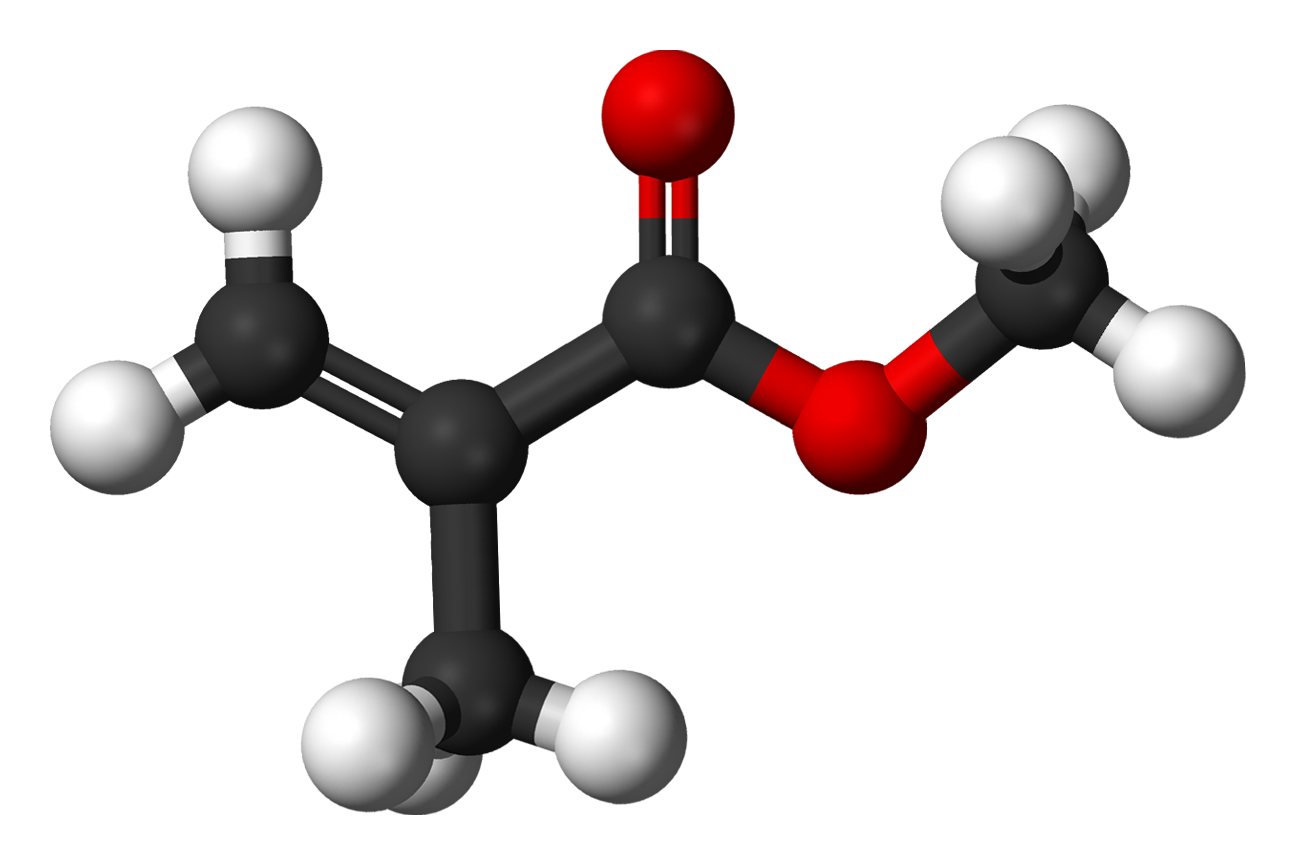 |
| Methyl-methacrylate By Jynto and Ben Mills [Public domain], via Wikimedia Commons |
In general, bone cement is very successful when used as a bonding agent. It needs to be properly prepared and pressurized into the bone and it works well. More recently, researchers have concluded that bone cement can break down over time in active patients. At the same time, orthopedic engineers have designed implants that have a roughened surface that bonds directly to bone without the use of cement. As a result, the orthopedic community has gradually shifted to the use of cement-less, porous coated implants for hip replacement.
Both the cup and the stem are usually implanted in what we call a "press-fit" manner. That means that the prosthesis is just a little bit larger than the opening in the bone. When the implants are impacted into position, they jam into place and have enough roughness and surface friction that they stay in place and are immediately stable. Usually a patient can put their full weight on the hip immediately after surgery without concern for the implants coming loose. Here is a hip replacement x-ray.
.JPG) |
| X-ray showing a total hip implant placed without cement or screws. Note that the metallic prosthesis is in direct contact with the bone. |
No comments:
Post a Comment